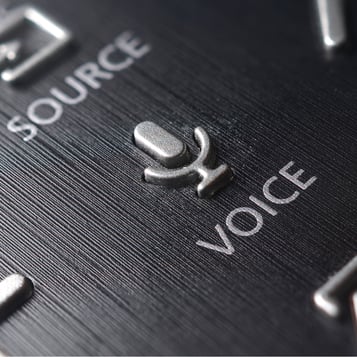July 21, 2020
More than ever, consumers are seeking out always-on voice command products to enable a safe and natural interaction between themselves and the digital world. And with COVID-19 spreading across the globe, human behavior is shifting towards hand-free devices to avoid physical contact with public screens, buttons, and controllers.
As a result of this increased awareness of how public surfaces can transmit disease, always-on devices are proliferating into smart cities, smart homes, and industrial applications. However, until recent advances in power-efficient hardware and software were developed, portable and battery-powered products couldn’t make use of voice command systems that are always listening.
In this latest white paper written jointly by Ambiq™, Vesper•, and DSP Concepts•, they discuss always-on voice command and its applications in portable and battery-powered products. Several breakthroughs in applications, techniques, and technologies that have made ultra-low-power voice command products possible are also examined.
In typical voice command systems, the user must push a button (so-called Push-to-Talk) to “wake up” the system instead of using a wake word. However, in an always-on voice command system, such as the smart speakers including Amazon• Echo, Apple• HomePod, or Google• Home, the system is always on and constantly listening for a specific wake word or trigger word such as “Alexa•” or “OK Google.”
We felt strongly about teaming up for this white paper for a few reasons. First, the rapid advancement of energy-efficient technologies has transformed ultra-low-power solutions for always-on voice command. As leaders of the ultra-low-power revolution, we wanted to share our collective insights on a topic that is becoming increasingly relevant in our everyday lives.
 Secondly, with the worldwide outbreak of COVID-19, consumers are looking to contactless solutions that can enable contactless interactions and transactions. Always-on voice command is at the forefront of the “hands-free” movement, and recent developments have enabled this feature in portable and battery-powered products in a way that previously impossible. For these products to be always listening, new energy-efficient technologies had to be developed to meet the challenging power demands.
Secondly, with the worldwide outbreak of COVID-19, consumers are looking to contactless solutions that can enable contactless interactions and transactions. Always-on voice command is at the forefront of the “hands-free” movement, and recent developments have enabled this feature in portable and battery-powered products in a way that previously impossible. For these products to be always listening, new energy-efficient technologies had to be developed to meet the challenging power demands.
To that end, technologies from Ambiq, Vesper, and DSP Concepts are working in tandem to meet these demands. Ambiq’s Apollo microprocessor line can run on less than 1/10th of the current of a conventional processor, while Vesper’s microphones can also reduce the power consumption of the entire system by 10X.
Finally, DSP Concepts is enabling reliable voice control in even the nosiest environments. Together, we are enabling ultra-low-power, always-on solutions for devices powered by small batteries. With our technologies working together, consumers are able to use always-on voice command, no matter if they’re at home or on the go. Remote controls, smartwatches, portable smart speakers, connected home devices, and wearable devices are some of the top uses for our technology.
The challenges of creating always-on voice command products that can run for many hours to many months on battery power are considerable. However, with the latest technologies, these challenges can be overcome in order to deliver a satisfying and reliable experience for consumers.
This white paper covers key topics about always-on voice command in portable and battery-powered products, including: